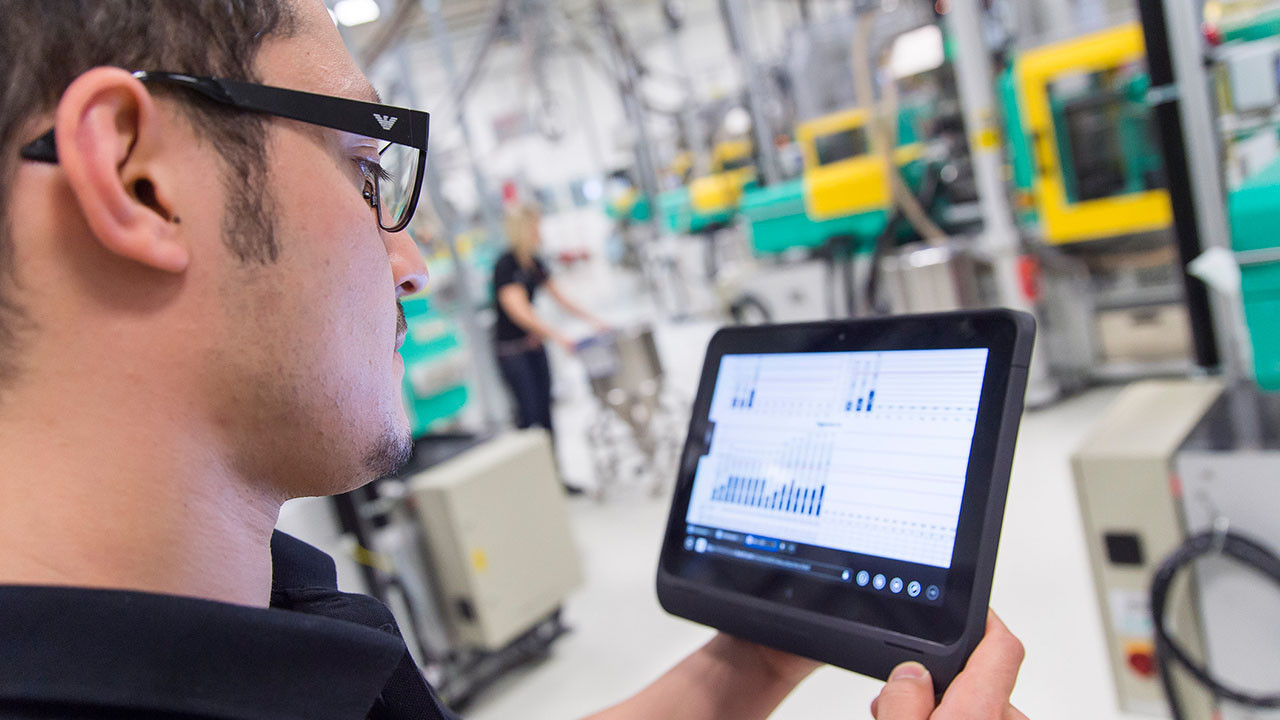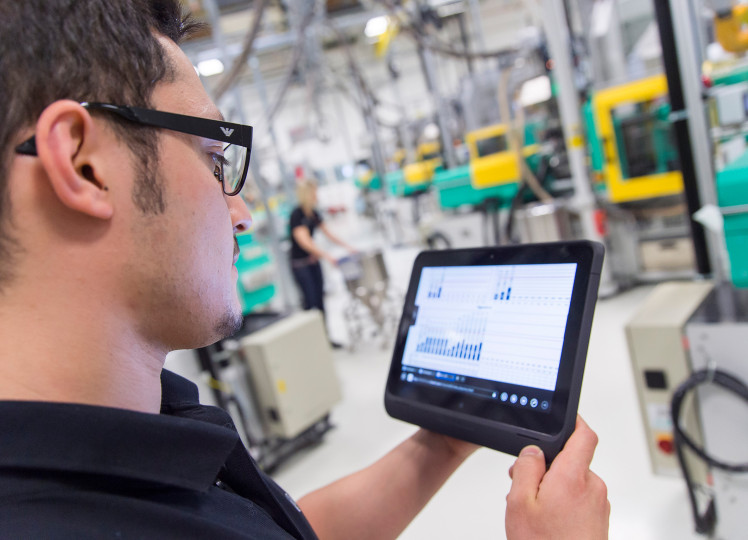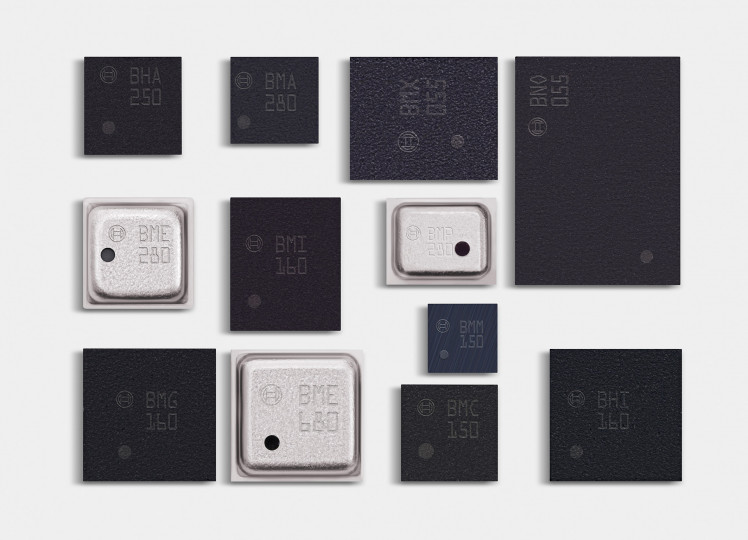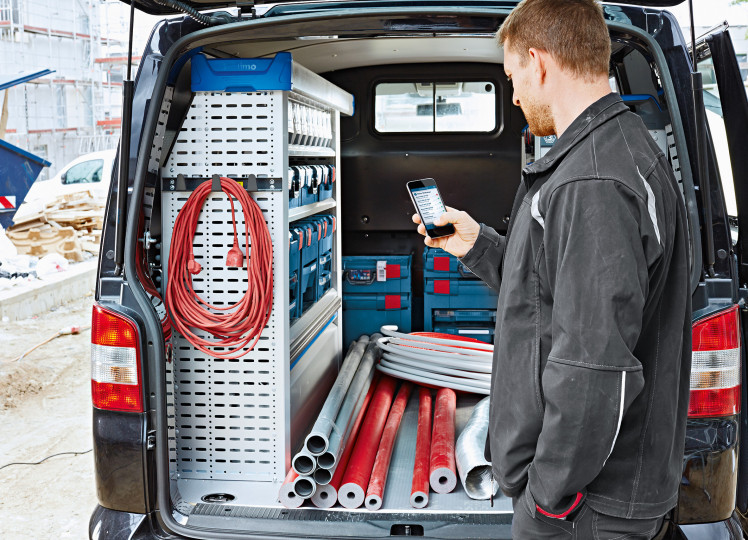Las Vegas, Nevada – At CES 2016, Bosch is presenting connected technology and services at two booths. At the Smart Home Marketplace, Sands Expo (booth #71517), the supplier of technology and services is showcasing the smart home, smart cities, and Industry 4.0. In the North Hall, the space devoted to automakers, Bosch is offering a look at the topic of connected mobility (booth #2302).
Smart homes: visitors get a peek inside the home of the future
Sands Expo
Smart-home system: Controlling all the connected devices in a home via one platform – this will soon be possible with the Bosch smart-home system. Designed for use in conjunction with a corresponding app for smartphone and tablet, the Bosch smart-home controller is the command center of the smart home. Lighting, heating, smoke alarms, doors, windows – everything can communicate with everything else. When the occupant leaves the house and closes the front door, the system automatically switches off the lights and turns down the heat. The first products for the connected home that Bosch is presenting at CES include the Bosch smart-home controller, smart thermostats, door and window contacts, and the “Hue” lighting solutions by its partner Philips. Other products are already in the pipeline.
Connected household appliances: Bosch is presenting a comprehensive portfolio of connected household appliances, such as refrigerators with interior cameras. Owners of these refrigerators can use their smartphones at the supermarket to quickly and conveniently check if there are still tomatoes in the crisper or enough eggs for breakfast.
“Smart mowing 2.0”: The Bosch Indego Connect mows the lawn when the conditions are right: not too hot, not too wet, and not too cold. The system is nonetheless flexible: Users can opt to set certain times during which the mower should not operate, or they can make use of the app’s newly integrated weather forecast feature to decide when the mower should go into action. Using the Bosch Smart Gardening app, the Indego Connect can be operated simply and conveniently from anywhere via smartphone or tablet. The result: maximum control and convenience while getting the same lawn area mown at least 30 percent faster than robotic lawnmowers that mow at random.
TrackMyTools: Workers who use Bosch’s server-based TrackMyTools solution know where their tools are at all times and can check to see if they have everything they need for site visits. TrackMyTools optimizes workflows, saves time, increases a company’s productivity, and is easy to operate from anywhere using a smartphone app.
Sensor technology: innovations and sample applications
Sands Expo
Bosch MEMS sensors (MEMS stands for microelectromechanical systems) can be found in vehicles, smartphones, games consoles, and tablets, as well as in countless other devices. Without them, a whole host of applications – in consumer electronics, but also in cars – would not be possible at all. Although only tiny, their impact is enormous: they help save lives and energy, and make driving more relaxed. Bosch MEMS sensors are the eyes and ears of billions of electronic devices.
Intelligent acceleration sensors: Smartphone and tablet apps present sensors with increasingly difficult challenges. They have to be ready for use at the drop of a hat and fulfill a whole host of different functions – without compromising battery life. To meet these demands, Bosch has developed the first acceleration sensors with integrated intelligence. They open up the possibility of new functions, such as gaming and fitness applications. At CES, Bosch is demonstrating the first acceleration sensors to feature integrated intelligence and be compatible with Android while also being particularly energy saving.
High-performance yaw-rate sensors: Yaw-rate sensors are necessary for many different applications, including gaming, augmented reality, virtual reality, and optical image stabilization. The two new triaxial Bosch yaw-rate sensors were developed especially for applications in these areas. Their low operating costs, low noise, and high image stability are especially noteworthy. Despite their high performance, the two sensors have the lowest power consumption of any discrete yaw-rate sensors in the market. In this way, they help prolong the battery life of mobile devices.
Bosch Ambient Sensor: Bosch’s Ambient Sensor is a smart sensor solution capable of measuring, analyzing, and communicating environmental conditions in buildings. These conditions include air quality, lighting conditions, and noise levels. The built-in sensor can help create better climatic conditions in offices and living spaces, for example by sending its readings to the facility manager’s smartphone and recommending changes to a room’s ventilation, temperature, or humidity. Its long battery life is a further advantage. The Ambient Sensor can not only be integrated into building automation systems, but also operated as a standalone solution.
XDK sensor platform for developing new IoT solutions: What if someone has an idea for an IoT (internet of things) application, but does not have a technical platform for building it? Bosch now offers a solution for this in the shape of its XDK sensor platform, a comprehensive hardware and software platform featuring different types of sensors as well as Bluetooth and wi-fi connections. It features a range of components including an acceleration sensor, a yaw-rate sensor, a magnetometer, and sensors to measure atmospheric pressure, air temperature and humidity, noise levels, and digital light. Companies can use this in developing their own IoT solutions – whether large or small. The XDK sensor platform is easy to install and to adapt to each application. In addition, developers are invited to join the XDK community. There, members can share their knowledge about functions and features, get inspired with new ideas for projects, present their work at exciting events, and win prizes. With its XDK sensor platform, Bosch helps its customers get new IoT business ideas ready for full-scale production as quickly as possible.
Smart cities: software and parking solutions for the city of tomorrow
Sands Expo
Bosch IoT Suite: Bosch’s IoT Suite is a software platform for interconnecting a city’s various applications, services, municipal authorities, and companies. At CES, Bosch is presenting visualized scenarios to demonstrate how the IoT Suite can connect power grids, lighting systems, traffic infrastructure, and buildings, helping to improve cities’ economic and energy efficiency.
Active parking lot management: Bosch’s active parking lot management makes it easier for drivers to find a parking space and helps parking garage operators improve capacity utilization. Bosch sensors installed in the pavement detect whether a parking space is occupied. The sensors wirelessly relay this information to a server, where the data is incorporated into a real-time map. Drivers can then access this map over their smartphones or the internet, allowing them to pick out an available space and navigate to it.
Community-based parking: In residential and inner-city areas, on-road parking spaces are a scarce commodity. Bosch community-based parking makes the search for suitable spaces easier. As the car drives around, it detects and measures free parking spaces between vehicles parked at the curb. The information is transferred to a digital road map. Powerful Bosch algorithms then corroborate the data to supply a prediction of the parking situation. Vehicles in the vicinity can access the digital map in real time, allowing drivers to navigate to a suitable spot.
Fully automated parking: Automated valet parking is a Bosch function that not only relieves drivers of having to search for a parking space, but also enables the vehicle to park itself. Drivers simply drop off their vehicle at the entrance to a parking garage. Using a smartphone app, they instruct the car to find itself a place to park. They instruct the car to return to the drop-off point in exactly the same way. Fully automated parking will require several things, including an intelligent parking garage infrastructure, on-board vehicle sensors, and connectivity for both. The car and parking garage communicate with each other: occupancy sensors identify where available parking spaces are located, so that the car knows where to go. Bosch is developing all the necessary components for fully automated parking in-house.
Connected mobility: more safety, convenience, and efficiency
North Hall
Touchscreen with haptic feedback: In advance of the trade show, Bosch received a CES 2016 Innovation Award in the In-Vehicle Audio/Video category for this screen. Haptic elements supplement the visual and acoustic interaction with the screen. The simulation of various surface textures makes it possible to recognize individual elements by touch. Users place a finger on what appears to be a button, or key. They then have to press more firmly on the virtual button to activate it. This reduces driver distraction, as they no longer have to visually check what they are doing. In terms of appearance, the haptic touchscreen looks no different from a standard display.
Connected Horizon: Even today, the electronic horizon provides data on inclines and the sharpness of bends to complement navigation data. The connected horizon will build on this by adding current, dynamic data relating to traffic jams, accidents, and mobile construction sites. This solution enables drivers to travel more safely and with an even better picture of the road ahead.
Bosch mySPIN is an appealing smartphone integration solution that smoothly integrates the smartphone into the vehicle, ensuring safe in-car use. This means drivers can continue to use their favorite apps safely and in the usual way, both for iOS and Android smartphones. The apps are pared down to show relevant information only, and displayed and managed via the vehicle display. To ensure minimum disruption and maximum safety, they have been specifically tested for use while driving.
Wrong-way driver alert: In Germany alone, some 2,000 warnings about wrong-way drivers are broadcast each year. In most cases, however, the warning comes too late, since such incidents generally end after an average of 500 meters – in the worst case with fatal consequences. Bosch is developing a new cloud-based solution designed to provide a warning within ten seconds or so. As a pure software module, this alert function can also be inexpensively integrated into existing infotainment systems or apps.
Highway pilot: The highway pilot takes over driving on freeways. Sensors monitor the vehicle’s surroundings, and the car combines this information with extremely accurate and up-to-date map data. This allows the driver to sit back and relax on most freeway routes while the car drives with a high degree of autonomy. Bosch is already testing this technology on public roads in the U.S., Germany, and Japan, so the highway pilot could be ready for mass production by 2020.
Retrofit eCall: Using the sensor-supported Retrofit eCall adapter, anyone can retrofit their cars with the automatic emergency eCall service. The adapter is suitable for all vehicle types; it plugs into the car’s cigarette lighter and connects with a smartphone app. If the integrated sensor registers a crash, it sends data such as the car’s current location to the app, which passes it on to a control center. A further practical feature is that the adapter’s USB slot can be used to charge devices such as smartphones and tablets.
Industry 4.0: automated assistants for production
Sands Expo
APAS assistant: Normally, the mobile APAS assistant would be stationed on the shop floor, as it has been designed to work with people there. But at CES 2016 it is adopting an entirely new function: serving coffee to visitors at the main Bosch booth at the Sands Expo. Thanks to its patented “sensor skin,” the robot immediately stops whenever someone gets too close.
APAS safeskin and APAS speedswitch: The mobile production assistants in the APAS family work hand in hand with people, and unlike other robots, without a safety barrier. This is possible thanks to a robot arm studded with 120 sensors and equipped with a three-finger gripper. An integrated laser scanner monitors the robot’s surroundings. If the robot recognizes that people are nearby, it slows down its working pace accordingly. As soon as there are no people in close proximity, the robot can ramp up to full speed. This increases productivity without endangering any workers.
IoT shopfloor solutions: automation software for connected factories: In Las Vegas, Bosch is presenting its IoT shopfloor solutions, an automation solution for managing production and logistics chains in a connected factory. The system includes software modules that help experts flexibly control and monitor production data, quality data, and logistics processes according to the customer’s specifications. Intuitive user interfaces make it easy to work with the machine. They make it possible for manufacturing workers, even those without previous programming knowledge, to define rules; for example, to automatically recognize problems and resolve them in good time. Further features allow companies to connect machines around the world and analyze production data in near real time. The IoT shopfloor solutions also include a new augmented reality app. It supplies the on-site experts with the latest production data or operating instructions and allows them to look inside the machine without having to open it.
Simply.Connected.
Follow the Bosch CES 2016 highlights on Twitter: #BoschCES
Mónika Hack
+36 70 510 5516
The Bosch Group is a leading global supplier of technology and services. It employs roughly 360,000 associates worldwide (as per April 1, 2015). The company generated sales of 49 billion euros in 2014.* Its operations are divided into four business sectors: Mobility Solutions, Industrial Technology, Consumer Goods, and Energy and Building Technology. The Bosch Group comprises Robert Bosch GmbH and its roughly 440 subsidiary and regional companies in some 60 countries. Including its sales and service partners, Bosch is represented in roughly 150 countries. This worldwide development, manufacturing, and sales network is the foundation for further growth. In 2014, Bosch applied for some 4,600 patents worldwide. The Bosch Group’s strategic objective is to create solutions for a connected life. Bosch improves quality of life worldwide with products and services that are innovative and spark enthusiasm. In short, Bosch creates technology that is “Invented for life.”
The company was set up in Stuttgart in 1886 by Robert Bosch (1861-1942) as “Workshop for Precision Mechanics and Electrical Engineering.” The special ownership structure of Robert Bosch GmbH guarantees the entrepreneurial freedom of the Bosch Group, making it possible for the company to plan over the long term and to undertake significant up-front investments in the safeguarding of its future. Ninety-two percent of the share capital of Robert Bosch GmbH is held by Robert Bosch Stiftung GmbH, a charitable foundation. The majority of voting rights are held by Robert Bosch Industrietreuhand KG, an industrial trust. The entrepreneurial ownership functions are carried out by the trust. The remaining shares are held by the Bosch family and by Robert Bosch GmbH.
Additional information is available online at www.bosch.hu
*The sales figure disclosed for 2014 does not include the former joint ventures BSH Bosch und Siemens Hausgeräte GmbH (now BSH Hausgeräte GmbH) and ZF Lenksysteme GmbH (now Robert Bosch Automotive Steering GmbH), which have since been taken over completely.











